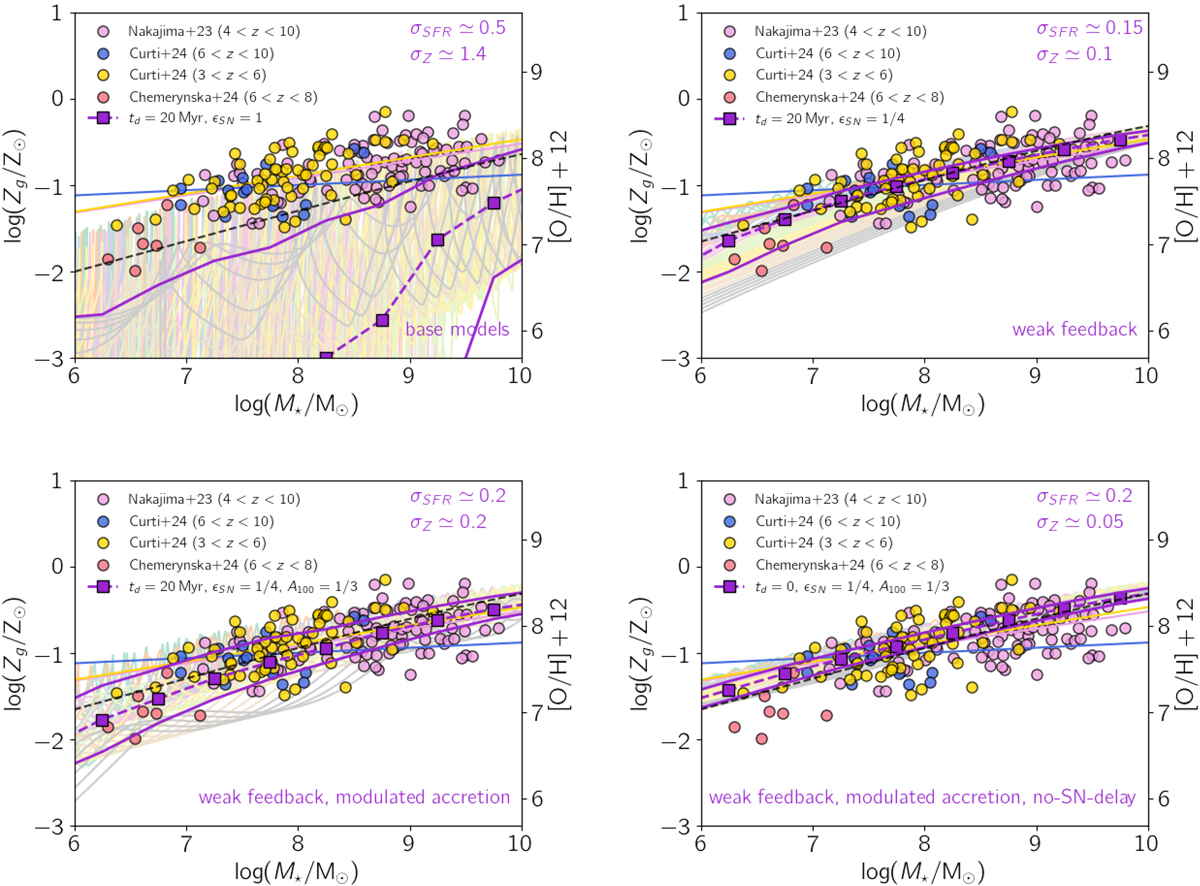Fig. 4.

Download original image
Predicted MZR relation for different sets of minimal models with 109 M⊙ ≤ Mdm ≤ 1013 M⊙ halos at z = 6. In the upper left panel, we report the “base models” with ϵSN and td = 20 Myr (see Sect. 3.2). In the upper right panel, we modify the base model by reducing the efficiency of the feedback (ϵSN = 1/4 in Eq. (2a)). In the lower left panel, we consider both weak feedback and a cosmic accretion that is modulated on a timescale of 100 Myr (A100 = 1/3 in Eq. (4)). In the lower left panel, we show the effect of turning off the SN-delay for the weak feedback models with modulated cosmic accretion. In each panel, pastel lines are the individual tracks sampled every 2 Myr; their median and 16 − 84% dispersion are plotted with dashed and solid violet lines, respectively; the dashed black line is the control case with no-SN-delay (td = 0) and no modulated accretion (A100 = 0). For each model, we report the value values of the SFR flickering (σSFR) and the MZR dispersion (σZ, see Fig. 5). As in Fig. 1, we show JWST data and fits (Nakajima et al. 2023; Curti et al. 2024; Chemerynska et al. 2024b).
Current usage metrics show cumulative count of Article Views (full-text article views including HTML views, PDF and ePub downloads, according to the available data) and Abstracts Views on Vision4Press platform.
Data correspond to usage on the plateform after 2015. The current usage metrics is available 48-96 hours after online publication and is updated daily on week days.
Initial download of the metrics may take a while.


